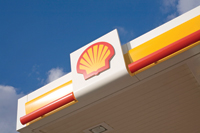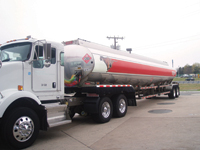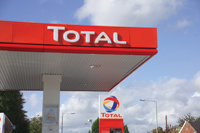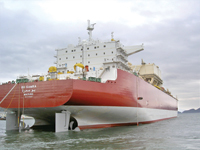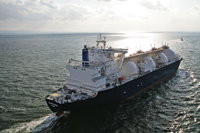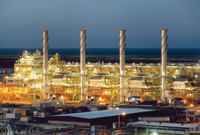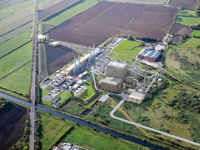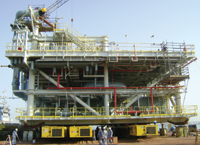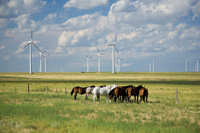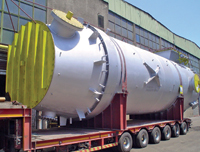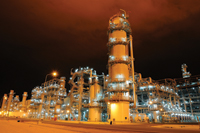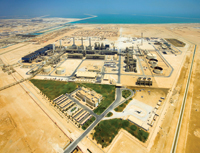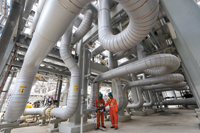
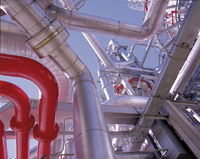 Qatar would pitch for a mature LNG project in Australia
Qatar would pitch for a mature LNG project in Australia
QATAR is planning to tighten its grip on the liquefied natural gas supplies vital for Asian economic growth by possibly buying into an Australian export boom that poses the only serious challenge to its place as the world’s top LNG exporter.
Facing self-imposed production limits on its own vast gas reserves, Qatar is looking abroad to invest some of its hundreds of billions of dollars of fuel export earnings. It may well target Australia, the one country that import-dependent Asian buyers are banking on to reduce their reliance on Qatari LNG.
“It is something that is being looked at seriously, and in all likelihood will be the next move made,” a senior source at state-run Qatar Petroleum says.
By 2020, Australia may eclipse Qatar as the world’s largest LNG exporting country.
Australia is now the fourth-largest LNG exporter and is already China’s biggest supplier.
Close proximity to the booming east Asian market, huge reserves and a low population density have attracted most of the world’s top gas companies to Australia. Nearly $216 billion of LNG export projects are under construction or planned there. The biggest LNG exporter of all, Qatar Petroleum, might join those companies in a bid to control at least some of the supply coming from the world’s fastest growing producer of gas cooled to liquid form for easy and flexible transport.
“The motivation would clearly be strategic. Australia will be their biggest competitor in the Asian market...They’d be primarily interested in gaining long-term market share,” says Dubai-based energy economist Robin Mills. There would also be a value of information. Just by being in the market, Qatar would gain valuable info about the competitiveness of the projects and about pricing.”
From its sprawling industrial city of Ras Laffan on the Gulf coast, Qatar can produce nearly 77 million tonnes a year of LNG for export. Analysts say it could remove bottlenecks in its existing facilities to boost output close to 90 million tonnes.
But Qatar was struggling to find buyers for all of its LNG until a tsunami wrecked Japan’s Fukushima nuclear power plant in March, driving up gas demand and prices around the world. Boosting its own output might be risky; buying into projects that are likely to be built anyway would give Qatar more LNG without weighing on global selling prices.
“They will have considerable LNG revenues and may seek some global LNG investment opportunities. It makes sense for them to look to Australia, in that respect,” says David Ledesma, research fellow at the Oxford Institute for Energy Studies.
“But are they going to want to produce any more themselves? That’s still not known.”
In the last several years, the world’s richest nation per-capita has bankrolled Europe’s tallest skyscraper – the “Shard” in London – bought the world famous department store Harrods, and snapped up the biggest football team in Paris.
Despite Qatar’s recent acquisitions, it still has enough funds from sales of LNG, natural gas condensate and oil to build a multi-billion dollar energy empire abroad.
Australian liquefaction capacity is forecast to increase five times from current levels to 100 million tonnes per annum (mta) by 2020, an official from the country’s bureau of resource and energy economics say.
Qatari output is largely fixed at 77 mtpy until 2015 at the earliest, although the plans to remove bottlenecks from existing facilities may free up plants to produce more. Any Qatari investment in Australia would face significant obstacles. Most LNG projects there are relatively costly as they are in remote areas where support infrastructure is limited. Australia has an expensive labour market with strong unions and tough environmental regulations.
The free market-focused Australian government would take a dim view of any attempt by companies to limit production in any gas projects in the country to push up prices, says Frank Harris, head of LNG consulting at Wood Mackenzie in Edinburgh.
Harris pointed to “use it or lose it” clauses in Australian gas export projects designed to stop developers from sitting on gas they could export.
It seems unlikely that Qatar would be interested in coal bed methane projects in eastern Australia, which involve a new technology with environmental problems and in which Qatar Petroleum has no experience.
But more conventional gas projects in the north and west of Australia could be prime targets for Qatar’s first major gas expansion outside the Middle East.
“Qatar would look at a mature project,” Mills says. “State-backed Middle Eastern oil companies very rarely take on a significant amount of expiration risk. It’s just not something they’re comfortable with.”
Harris agreed that any investment abroad would probably focus on export projects at existing fields because of Qatar Petroleum’s aversion to risk.
But Qatar is unlikely to be interested in being just another partner to an international energy company, without being able to control output and prices, he adds.
“They could develop a second LNG complex outside Qatar, but it would have to be Qatari-controlled. I don’t see them being a passive partner in somebody else’s project.”
]
Abdulrahman Al-Shaibi, director of finance at Qatar Petroleum, believes Australia’s LNG sector is a most appropriate ally to further Qatar’s LNG business.
“We are exploring all geographical places that would really achieve our business objectives and Australia definitely is an important proposition where maybe we will be able to find good investment opportunities,” Al-Shaibi says.
It is not clear, however, if Qatar Petroleum will work into investing into a new pipeline project in the Australian LNG sector, or just tap into expanding an existing facility.










































































